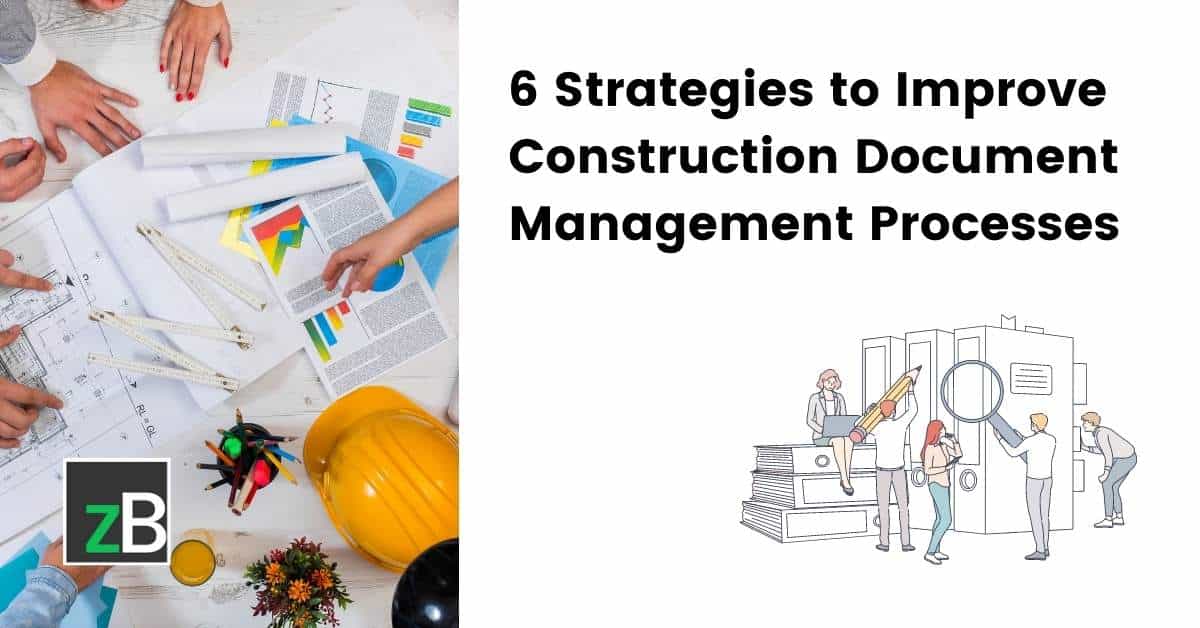Enhancing Operations Effectiveness: Architect's Specialist Approaches for Building Document Management
In the realm of architectural design and building, the thorough management of documents stands as a foundation for job success. These strategies not only make certain smooth project progression but also hold the essential to unlocking enhanced productivity and precision in the elaborate realm of building and construction paper administration.
Secret Paper Organization Methods
When managing building files, one of the essential techniques that architects employ is establishing a reliable and organized company system. This system usually includes classifying papers based upon their kind, such as drawings, requirements, agreements, and allows. By producing clear and unique groups, engineers can swiftly find particular information when needed, saving time and reducing mistakes in the construction process.
Within each group, architects better arrange files by producing subfolders or using numbering systems to signify alterations or versions (construction document management). This ordered structure makes sure that the most pertinent and present details is easily available while preserving a document of adjustments made throughout the task timeline
Furthermore, designers usually make use of electronic document management platforms that supply features like keyword search functions, version control, and access restrictions to enhance organization and collaboration among task stakeholders. These devices streamline the document access procedure, advertise real-time updates, and promote smooth interaction, inevitably adding to the total success of the building and construction task.
Collaborative System Combination
To enhance file administration efficiency in construction projects, engineers flawlessly incorporate collective platforms to enhance communication and streamline control amongst job stakeholders. By leveraging collective platforms such as project monitoring software program, cloud-based storage space systems, and interaction devices, architects can create a central hub for all project-related documents and interaction networks. These platforms permit group members to access, testimonial, and collaborate on documents in real-time, reducing hold-ups and the danger of mistakes related to conventional record administration methods.
Joint system assimilation additionally fosters transparency and liability within the project team, as all stakeholders have presence right into the current task updates and revisions. By streamlining communication and record sharing, architects can make certain that all team members are functioning from one of the most up-to-date information, lessening the opportunities of disputes or misunderstandings occurring because of out-of-date papers.
Additionally, joint systems make it possible for seamless collaboration between designers, professionals, customers, and various other task stakeholders, advertising a more efficient and cohesive project process. By damaging down interaction barriers and helping with info exchange, designers can drive efficiency and advancement in building tasks, inevitably bring about effective job results.
Variation Control Finest Practices
Executing efficient version control methods is critical for keeping record precision and uniformity in building projects. By establishing a clear system for managing revisions, project groups can ensure that every person is functioning from one of the most updated paperwork, decreasing the risk of mistakes and disparities throughout the building phase.
Among the crucial ideal methods for version control is to assign one-of-a-kind identifiers per file version. This can be accomplished by utilizing a numbering system or day stamp that clearly indicates the order of modifications. By clearly labeling each version, staff member can quickly track the progression of the document and recognize the most current version.

Automation Devices for Effectiveness

Document control software application, like Procore or PlanGrid, centralizes task documentation, making it easily available to all stakeholders. These platforms permit real-time partnership, variation control, and automated back-ups, guarding versus information loss. In Addition, Structure Information Modeling (BIM) software automates the generation of construction drawings and makes sure that modifications are integrated throughout all associated papers.
Integrating automation tools with cloud storage services even more improves ease of access and safety. By automating the paper monitoring procedure, job teams can focus their effort and time on value-adding activities, ultimately boosting performance and task end results.
Secure Information Administration Solutions
Successfully guarding and handling job data is paramount in the building and construction market to guarantee confidentiality and honesty throughout the task lifecycle. Safe data monitoring options play a critical duty in securing sensitive details from unapproved access or violations. Architectural firms can make use of encrypted cloud storage solutions to safely store and share job records with accredited employees. Applying gain access to controls, such as user verification and consent setups, guarantees that just licensed people can see or modify sensitive information.
Additionally, using electronic rights administration (DRM) devices includes an additional layer of protection by preventing the unauthorized circulation or duplication of project files. Normal information backups are necessary to mitigate the risk of data loss because of unpredicted circumstances like hardware failures or cyber-attacks. Collective systems with integrated protection features enable seamless communication and data sharing among job employee while preserving information honesty.
Final Thought
To conclude, carrying out key record organization techniques, integrating collective systems, exercising variation control ideal techniques, making use of automation devices, and taking on safe and secure information monitoring remedies are crucial strategies for enhancing operations performance in construction document management. These expert strategies can streamline processes, boost interaction, make sure accuracy, and maintain information protection throughout the building and construction job lifecycle.
In the realm of architectural style and building, the meticulous monitoring of papers stands as a foundation for job success. These strategies not just make sure smooth project development yet likewise hold the key to opening boosted productivity and precision useful reference in the intricate world of construction document monitoring.
To enhance document monitoring effectiveness in building and construction jobs, architects flawlessly incorporate collaborative systems to improve interaction and enhance coordination amongst project stakeholders. These platforms permit team participants to gain access to, evaluation, and collaborate on records in real-time, decreasing hold-ups and the risk of mistakes associated with typical file management techniques.
Making use of automation tools in building and construction document administration considerably improves efficiency and improves procedures for task teams. construction document management.